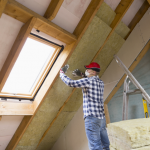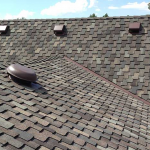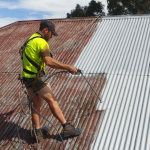Roof Waterproofing Membranes vs Roof Coatings: Which Offers Better Protection

Are you considering roof waterproofing membranes or roof coatings for your building? Understanding the differences between the two can help you make an informed decision.
This article will explore the key factors to consider when choosing between roof waterproofing membranes and roof coatings, from the materials used to the durability and cost. We will also discuss which option offers better protection regarding waterproofing capabilities, UV resistance, and maintenance.
Stay tuned to make the best choice for your roof!
What Are Roof Waterproofing Membranes and Roof Coatings?
Roof waterproofing membranes and roof coatings are essential components in protecting buildings from water damage.
These materials play a crucial role in extending the lifespan of the building by safeguarding it against leaks, mould growth, and structural deterioration caused by water infiltration. Waterproofing membranes are typically installed under the roof surface, creating a watertight barrier that prevents moisture from seeping into the building envelope.
On the other hand, roof coatings act as a shield, reflecting sunlight and reducing heat absorption, which helps maintain a stable indoor temperature and decrease energy costs. Using these materials not only ensures structural integrity but also enhances the overall efficiency and sustainability of the building.
What Are the Differences Between Roof Waterproofing Membranes and Roof Coatings?
Understanding the differences between roof waterproofing membranes and roof coatings is crucial for selecting the most suitable solution for your building. While both provide protection, membranes are a barrier to water infiltration, whereas coatings enhance durability and weather resistance.
Materials Used
The materials used in roof waterproofing membranes and roof coatings significantly determine their performance and longevity. Waterproofing membranes are typically made of materials like EPDM or TPO, known for their flexibility and durability, while roof coatings often consist of acrylic or silicone for weatherproofing properties.
These materials are carefully selected to provide specific benefits based on the roofing system’s intended use. EPDM membranes offer excellent resistance to UV rays and temperature variations, making them suitable for residential and commercial structures.
On the other hand, TPO is popular for its energy efficiency and ease of installation, making it a preferred choice for eco-friendly building designs.
Acrylic roof coatings are known for their reflective properties, which reduce heat absorption and lower cooling costs. Meanwhile, silicone coatings offer superior waterproofing abilities and resistance to ponding water.
The composition and properties of these materials are crucial in ensuring that the roof waterproofing system performs effectively in diverse environmental conditions.
Application Process
The application process of roof waterproofing membranes and roof coatings varies significantly, impacting efficiency and effectiveness. Membranes are usually installed in layers, creating a seamless barrier, whilst coatings can be sprayed or rolled onto the roof surface, providing a protective seal.
For roof waterproofing membranes, the installation typically involves cleaning the roof surface thoroughly to ensure proper adhesion. Depending on the membrane type, the layers are then applied using techniques such as torching, cold adhesive, or self-adhesive methods. Pay attention to overlaps and seams to prevent water penetration is crucial.
In contrast, roof coatings require meticulous surface preparation to promote adhesion. Whether choosing a spray-applied or rolled-on coating, the application should be uniform and consistent to achieve an effective waterproofing barrier.
Durability and Lifespan
The durability and lifespan of roof waterproofing membranes and coatings are crucial in assessing their performance and cost-effectiveness. Membranes offer excellent longevity and robustness, while coatings may require more frequent maintenance but can enhance the roof’s aesthetics.
Renowned for their resilience against severe weather and UV radiation, roof waterproofing membranes stand as a sturdy option for enduring safeguarding. On the other hand, coatings may need to be reapplied periodically to maintain their effectiveness. Despite this, coatings provide an added layer of protection and can be customised to match the building’s colour scheme. When considering the longevity of these materials, it is essential to weigh the upfront costs against the anticipated maintenance expenses over the roof’s life.
Cost
The cost factor is a significant consideration when choosing between roof waterproofing membranes and coatings, as it impacts the initial investment and long-term maintenance expenses. While membranes may have a higher upfront cost, they offer better longevity, potentially reducing maintenance costs.
On the other hand, coatings typically require lower initial investment but may need to be reapplied more frequently, leading to higher maintenance expenses over time. It’s crucial to weigh the upfront cost against each option’s expected lifespan and maintenance requirements to determine the most cost-effective choice for your roofing project.
Conducting a comprehensive cost-benefit analysis enables you to make a well-informed decision that corresponds with your financial parameters and objectives for long-range maintenance.
Which One Offers Better Protection?
Determining which roofing solution offers better protection, whether roof waterproofing membranes or coatings, depends on various factors such as waterproofing capabilities, UV resistance, and maintenance requirements. Both options provide distinct advantages in safeguarding the structure against environmental elements.
- Waterproofing membranes are known for their seamless and durable nature, creating a barrier that prevents water infiltration effectively.
- On the other hand, coatings offer a more versatile application process, allowing for easy reapplication in case of wear and tear.
Regarding UV resistance, membranes tend to have better long-term protection, as they are designed to withstand prolonged exposure to sunlight without degradation. Coatings with UV inhibitors can also provide adequate protection.
Regarding maintenance, coatings may require more frequent touch-ups than membranes, which generally have a longer lifespan with minimal upkeep needs.
Waterproofing Capabilities
The waterproofing capabilities of roof waterproofing membranes and coatings are critical in safeguarding the building against water intrusion and damage. Membranes provide a robust waterproof barrier, while coatings enhance the roof’s weatherproofing properties.
These protective layers play a vital role in maintaining the structural integrity of the building by preventing water infiltration, which can lead to mould growth, structural deterioration, and interior damage.
The membranes and coatings effectively seal off potential entry points for moisture, creating a durable shield that ensures the roof’s longevity and stability.
Their ability to resist harsh weather conditions further reinforces their importance in the building’s overall structural health and performance.
Resistance to UV Rays
The resistance to UV rays is a crucial factor in evaluating the protective qualities of roof waterproofing membranes and coatings. UV-resistant materials can prolong the roofing system’s lifespan and mitigate sun-induced damage.

UV resistance plays a vital role in safeguarding roof structures from the harmful effects of prolonged sun exposure. Roofing materials that lack UV protection are prone to degradation, leading to cracks, discolouration, and overall deterioration. By incorporating UV-resistant components in waterproofing membranes and coatings, property owners can enhance the durability and performance of their roofs, thereby reducing maintenance costs and ensuring long-term structural integrity. This emphasis on UV resistance highlights the importance of selecting high-quality materials that can withstand the rigours of outdoor conditions.
Resistance to Chemicals and Harsh Weather
Chemical resistance and harsh weather conditions are vital for roof waterproofing membranes and coatings to maintain their integrity and performance over time. Chemical-resistant materials and weatherproof coatings can protect the roof from environmental stressors.
These specialised materials are designed to endure constant exposure to chemicals, such as acids and alkalis, and severe weather elements like rain, snow, and UV radiation. By withstanding these challenges, the roof waterproofing membranes and coatings ensure the longevity and effectiveness of the entire roofing system, safeguarding the building’s structural components from potential damage.
Their ability to resist deterioration from chemical interactions and climatic fluctuations contributes to the overall durability and strength of the roof, providing long-lasting protection for the underlying structure.
Maintenance and Repairs
The maintenance and repair requirements of roof waterproofing membranes and coatings influence their long-term performance and durability. Regular maintenance schedules and prompt repairs can extend the lifespan of these roofing solutions.
Property owners can identify potential issues such as leaks, cracks, or signs of wear and tear in the membranes or coatings by conducting routine inspections. Timely detection and addressing these issues can prevent water infiltration, mould growth, and structural damage, safeguarding the building’s integrity.
Periodic cleaning and application of protective coatings can enhance the resistance of the membranes to environmental factors like UV exposure and harsh weather conditions, ensuring that they maintain their effectiveness over time. Preventive maintenance measures can save time and costs for major repairs or replacements.
What Are the Factors to Consider When Choosing Between Roof Waterproofing Membranes and Roof Coatings?
Selecting between roof waterproofing membranes and roof coatings involves evaluating factors such as roof type, climate conditions, budget constraints, and long-term goals. Understanding these considerations is crucial for deciding on the most suitable roofing solution.
Roof type compatibility plays a significant role in deciding between membranes and coatings. Membranes are often preferred for flat roofs due to their seamless application and ability to cover large areas efficiently. At the same time, coatings are more versatile and can be used on various roof types.
Climate resilience is another key factor. Membranes offer durability in extreme weather conditions, whereas coatings may require more frequent reapplications in harsh environments.
Financial implications differ, with initial costs for membranes being higher but potentially lower maintenance expenses in the long run. Future objectives, such as sustainability goals or building usage changes, should also be considered when determining the best option for roof waterproofing.
Roof Type
The roof type significantly determines the most suitable waterproofing solution, whether membranes or coatings.
Flat roofs benefit from seamless membranes, while durable coatings protect sloped roofs.
This is because flat roofs are more prone to water pooling, making seamless membranes a preferred choice as they provide a continuous barrier against water infiltration.
On the other hand, sloped roofs allow for better water drainage, and coatings can be applied to enhance durability and weather resistance.
When selecting between membranes and coatings, the structural design of the roof must be considered to ensure optimal waterproofing performance and longevity.
Climate and Weather Conditions
Climate and weather conditions are crucial in selecting the appropriate roof waterproofing solution. Areas with extreme weather may require highly weatherproof coatings, while regions with heavy rainfall could benefit from robust waterproofing membranes.
In regions with significant temperature variations, flexible waterproofing membranes are preferred as they can withstand expansion and contraction without compromising their integrity. On the other hand, areas prone to UV exposure might opt for coatings with reflective properties to minimise heat absorption. Considering environmental exposure such as pollutants or saltwater spray, durable membranes with resistance to chemical degradation are essential.
These factors highlight the importance of tailoring roof waterproofing solutions to suit specific climate conditions for long-lasting protection and resilience.
Budget
Budget constraints are a significant factor in deciding between roof waterproofing membranes and coatings. While membranes may have higher initial costs, coatings could require more frequent reapplications, impacting the overall budget allocation.
The long-term financial implications of choosing between the two options must be carefully considered. Despite their higher upfront expenses, roof waterproofing membranes often offer greater durability and require less maintenance over time, potentially resulting in lower overall costs in the long run.
On the other hand, coatings may seem more cost-effective initially, but their recurring application expenses can add up, making them less financially efficient over the roof’s lifespan. Therefore, understanding the total cost of ownership and factoring in future expenses is crucial in making a well-informed decision based on budget constraints.
Long-Term Goals
Considering long-term goals is essential when choosing between roof waterproofing membranes and coatings. Factors such as expected building lifespan, maintenance commitments, and sustainability objectives can influence the selection of the most appropriate roofing solution.
It is crucial to assess how each option aligns with the building project’s overarching sustainability targets. Waterproofing membranes, known for their durability and ability to resist wear and tear over time, may be favoured for structures with long projected lifespans.
On the other hand, coatings offer versatility, making them suitable for buildings with evolving maintenance needs. Planning for future maintenance requirements is vital in ensuring the cost-effectiveness and structural integrity of the roof in the long run.








